Renaissance: most important features and works of art
The Renaissance was a European cultural and artistic movement based on the "rebirth" of the values of classical antiquity. It reached its peak in the 15th century and lasted until the first half of the 16th century, when it gave way to the Baroque period. It had its origin in the region of Italy, from where it spread to the rest of Europe.
As for art, the researcher Pierre Francastel says that two great centers of diffusion were formed, despite the fact that the Renaissance was expressed far beyond those limits. These two great centers of artistic diffusion would be:
- Italy: with commercial cities opposed in character to the Roman-Byzantine rigidity.
- North Europe: through the princely courts of the royal house of France.
First of all, let's learn about the characteristics of Renaissance art, and then understand the context and cultural values that made these distinctive features possible.
Renaissance Features
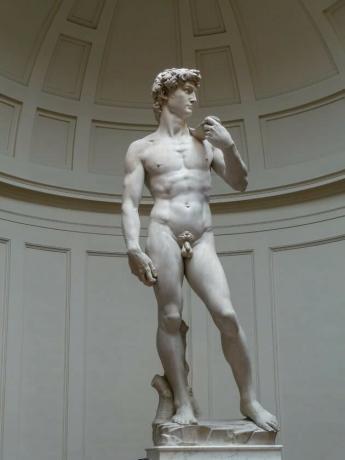
Although the Renaissance had different expressions throughout Europe, the styles and interests developed have common characteristics that allow us to understand and identify it. Let's see.
Imitation of classical Greco-Roman art in all disciplines
Classical art was for the Renaissance the fundamental reference, both at the level of content and in terms of style. They looked for inspiration in classical antiquity and, with this, they renewed the universe of themes and criteria for aesthetic creation in all disciplines.
Symmetry, balance and proportion
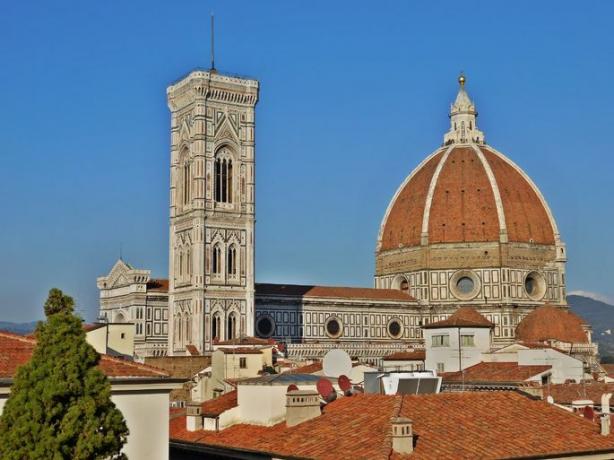
Part of this interest in classical antiquity was expressed in the adoption of these three fundamental aspects of the classical cannon: balance, proportion, and symmetry. They were not only seen as aesthetic elements at the service of the elegant, clear and diaphanous composition, but as an expression of the scientific and philosophical rationalism of the time.
Perception of art as a form of knowledge
The scientific spirit also penetrated art, as artists assiduously studied geometry, anatomy, and other sciences. If in the Middle Ages the plastic arts were considered manual arts, below the arts liberals, during the Renaissance there was a struggle to understand the plastic arts as a form of knowledge.
Nature study
According to Pierre Francastel, unlike the Middle Ages, Renaissance art is no longer a code of conduct, but an inventory of the universe, for which man began to think in terms of the physical laws of universe. Geometric, mathematical, botanical, anatomical, philosophical knowledge, etc. were applied.
In the plastic arts, for example, this allowed the development of the following elements:
- Study of diaphanous light (to the detriment of the colorful light of the Gothic), which gave rise to chiaroscuro;
- Study of spatial geometry, which perfected linear or vanishing point perspective.
The study of nature resulted in the refinement of naturalism, that is, the principle of imitation of natural forms in search of the verisimilitude.
Separation of art and craft
The relationship of art with the rational and scientific spirit brings with it artistic specialization and, little by little, the medieval guilds of artisans give rise to the artists' workshops, with which art gains autonomy as an object, relegating to the condition of crafts all those objects subordinated to a pragmatic function.
Changing the social function of art
Faced with the new changes, which imply an intellectual refinement of the contents, the public leaves reducing and the elitesco (specialist) circuit widens, even as the artist continues to address everyone. Art becomes an object of social distinction and no longer just a vehicle for the promotion of institutional content.
Topics
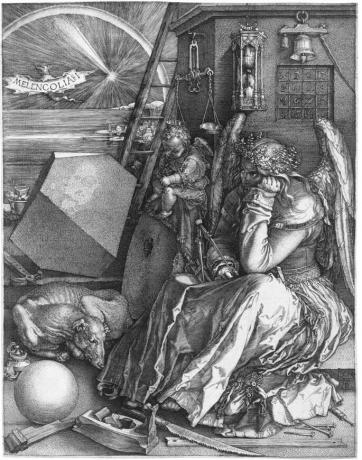
If in the Middle Ages sacred art was more valued than profane, in the Renaissance art itself will be valued thanks to the advance of secularization, which opened the range of subjects. Profane themes such as mythology, history, individuals, as well as religious themes were revalued.
Death was not only reflected in the concern for the medieval afterlife, but the anthropocentric gaze of Greco-Latin inspiration, which rescued pleasure, favored interest in topics tempo fugit (transience of time), collige virgo roses ('cut the roses, maiden') and Carpe Diem (seize the day).
In religious matters, the madonnas with the child, in its different variants, which responded to the creativity of the artist and the wishes of the client / employer.
Genders
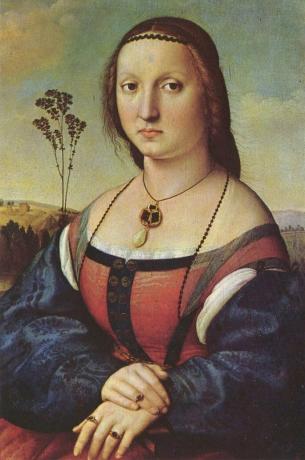
In the Renaissance, new genres appeared thanks to the powerful and secular spirit of those years, and others that came from the ancient and / or medieval tradition continued to develop.
On painting, thanks to the appearance of the oil painting technique, painting on canvas appears. This allows the development of new genres. The creation of a very important genre such as the pictorial (individual) portrait stands out. Also, the sculpture it is also definitively independent of architecture. Free-standing sculpture and public monuments flourish.
In the literature, a new genre of great importance for modernity appears: the essay, of which the Frenchman Michel de Montaige is the promoter. In the lyric, major genres such as song, hymn, ode, satire, eclogue and elegy are developed. The minor genres developed are the madrigal, the letrilla and the epigram.
In narrative in verse, the epic, the epic poem, the romance are practiced. Within the prose narrative highlights the story, the legend, the fable and, in particular, the novel in its different subgenres: the picaresque, the chivalric novel, the pastoral, the Moorish and the Byzantine, among others. Dramatic art is also developed which, towards the end of the Renaissance, attained great importance.
In the music, the most important turn was the appearance of polyphony, thanks to which genres such as the motet, the madrigal, the mass, the romance, the salad, the carol, the chanson polyphonic, etc. Within the instrumental forms, dances, the toccata, the prelude, etc. flourished.
He may also interest you: 15 characteristics of the Renaissance
Historical context of the Renaissance

Identifying the date of origin of the Renaissance is complex, since it responds to a gradual process. Some authors take as a reference the end of the Black Death in 1348. Other authors establish the origin of the Renaissance in 1453, when the Byzantine Empire fell after the Ottoman siege.
In any case, it is not surprising why the Renaissance arose and, furthermore, why it had its origin in the Italian peninsula. Let's look at some of the most important aspects.
From the Middle Ages to the Renaissance
During the Middle Ages feudalism dominated, a closed economic system that did not allow upward mobility. Europe, divided into kingdoms, maintained its cultural unity in Christianity, so the social and cultural organization was theocentric.
Towards the end of the Middle Ages, the development of agricultural technology allowed an increase in production. With this, trade grew and the boroughs appeared, that is, urban centers where the bourgeoisie lived, endowed with diversified commercial and cultural activity.
The black plague momentarily stopped this growth. It arrived first to Genoa, Venice and Mecina between 1347 and 1348, coinciding with the war between the Hungarian and Neapolitan kingdoms. The plague quickly spread through France, England, Spain, Russia, and the rest of Europe.
The mortality caused by the Black Death also brought cultural consequences. On the one hand, prostitution increased as the men who supported the home died. On the other hand, many people indulged in the satisfaction of their carnal appetites in the face of the threat of death.
The origin of the Renaissance
With the end of the plague a process of restoration began. Peasants who recovered land without an owner and put it to produce coincided on the scene; salaried city dwellers with better pay due to staff shortages; merchants and moneylenders. Thus a proto-capitalist economy was consolidated, that is, an early capitalism.
The Italian city-states of that time began to yearn for the greatness of the Roman imperial past. By adding the economic and political conditions caused by the fall of the Byzantine Empire and the growth of production and trade Western, interest in literature, philosophy and the art of imperial glory was renewed, that is, interest in antiquity was renewed classical.
Meaning of the word Renaissance
Why the Renaissance was called that is usually one of the questions that arouses the most curiosity. This historical period was called the Renaissance because it was precisely a revival of interest in the Greco-Latin past, of particular importance to the pride of Italian city-states, who felt themselves first-hand heirs to glory imperial.
But while all of Western Europe had been under Roman rule in the past, this cultural tradition was not unusual outside the confines of the Italian peninsula.
Overcoming social immobility typical of medieval times was also an element that raised awareness of a new social and cultural order.
Very soon the Renaissance spread throughout Europe, becoming a true cultural transformation. That new vigorous and optimistic spirit now focused on the human being, which led to the development of an anthropocentric culture.
Renaissance values
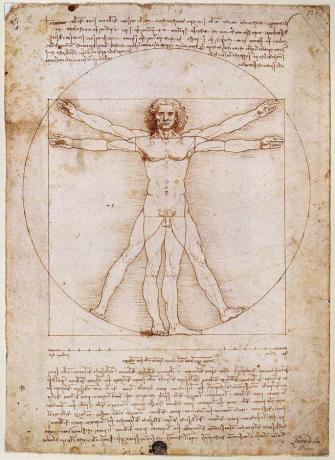
Humanism and anthropocentrism
An essential value of the Renaissance is anthropocentrism, which consists in making the human being the center of reference for social and cultural life. Part of this change is rooted in the theocentric humanism of the Middle Ages, which gives rise to the anthropocentric humanism of the Renaissance. However, according to Pierre Francastel, the belief in divinity does not collapse, but rather the faith in the mystical essence of the world.
Pierre Francastel also reports that the passage from the Middle Ages to the Renaissance is not explained by the refinement of the technique, but by the transformation of human relations, since man is no longer at the mercy of the fate that the clergy imputes to him, but he understands the relativity of the condition human.
Classical antiquity assessment
The values of classical antiquity are taken up in the Renaissance. Thus, the texts of Greco-Latin authors are read and translated and the art of antiquity is studied with special interest, which they consider a cultured and highly invoiced expression that underlines the human by excellence.
Rationalism and scientism
This eagerness for the thought of the ancients favors a return to rationalism and scientism. A great curiosity to understand the universe infuses everything. The Renaissance removes the mystical veil of nature and decides to investigate it and discover its last secrets. The sciences experience significant growth derived from interest in research in all areas.
Individualism
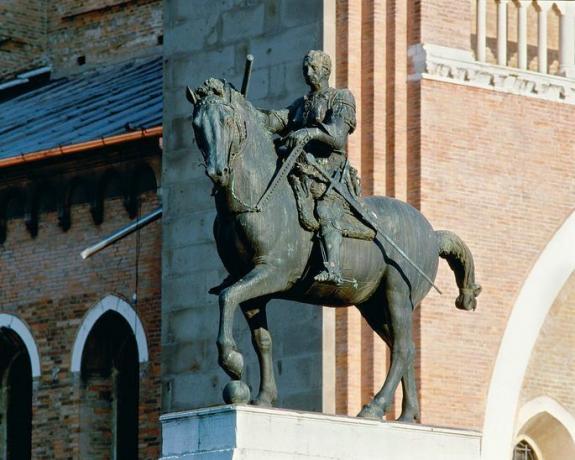
If the Middle Ages were communal, the Renaissance allows individualism to flourish, but not in the sense that we currently give the word. The individualism of the Renaissance was based on the understanding of man as a whole, highlighting pleasure, dignity and freedom.
Secularization of knowledge and culture
During the Renaissance, the Church ceased to be the only or main cultural promoter of the West, and the sectors Civilians take a leading part in the artistic-cultural production, the promotion and protection of the arts and Sciences.
Appearance of the gentle-man
With the Renaissance and all the values associated with it, the ideal of the multiple and learned man appears, who knows all the sciences and areas, and integrates them. It is the ideal of the gentleman.
Patronage
In the Renaissance, patronage was called the practice of promoting art and protecting artists. The people who acted as "protectors" were called patron. Both names were derived from Cayo Cilnio Mecenas, an Etruscan Roman nobleman from the 1st century BC. C. who, in a personal capacity, stood out as a passionate promoter of the arts and literature. He was, in fact, a friend of Horacio and Virgilio.
Renaissance patronage was also led by secular, noble and bourgeois sectors, who sought to honor God, their city and themselves through the promotion of the arts. Among the most important patrons of the Renaissance are: the Medici family, the Uffizi family, the Gonzagas, the Sforzas, the Borgias, the D'Este, among others.
Often, patrons, also called donors, patrons or clients, appeared in the artistic works they promoted. That was inadmissible in medieval times, but the new cultural order of the Renaissance allowed it.
He may also interest you: Baroque: characteristics, representatives and works.
Stages of Renaissance art
Although it is true that the full Renaissance occurs in the 15th century, some authors establish their beginnings and, therefore, as regards arts and culture, the awakening of a new consciousness begins esthetic.
If the gaze is fixed on Italian historiography, the Renaissance is divided into designated stages according to time cycles that encompass all cultural production. these are: Trecento, Quattocento Y Cinquecento.
Trecento
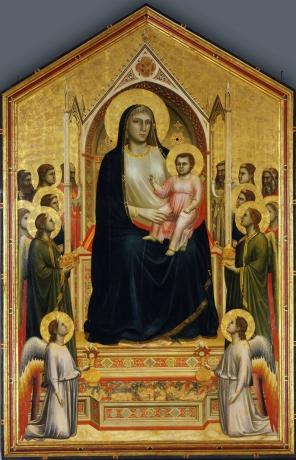
Trecento is an Italian expression that refers to the fourteenth century, that is, the cycle of the 1300s in Italy. It is about the transition to the full Renaissance.
During that period, the individualization of the characters occurs, thus differentiating themselves from the Middle Ages, which tended to stereotyping. Likewise, the expression of emotional features is sought, greater attention is paid to anatomy, the background of the composition that includes the landscape begins to be worked on and the technique of the cool. This aesthetic renovation gives rise to two great schools: the Sienese and the Florentine.
Quattrocento
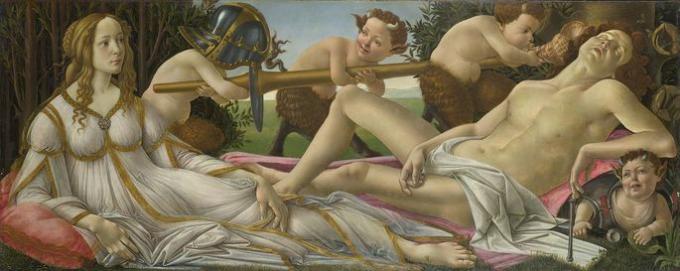
It corresponds to the 1400s, that is, the 15th century and constitutes the full Renaissance. Its center of greatest development was in Florence. Medievalism is left behind and classical mythology reappears. Sculpture is definitively independent from architecture and round-shaped sculpture is favored. Oil painting develops and the genre of pictorial portrait appears. The use of spatial geometry is perfected. The architecture returns to the classical Greco-Roman canon.
Cinquecento
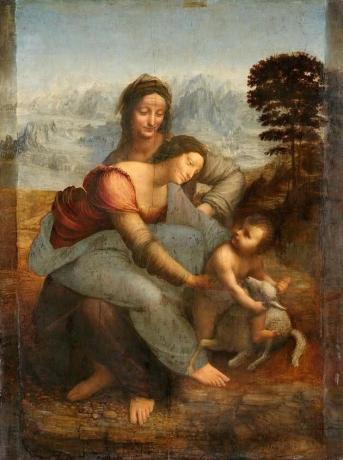
This period corresponds to 1500 or 16th century. The Renaissance reaches its maximum expression and begins a new stage called mannerism, which coexists with the classicist trend. The center of the Cinquecento production was in Rome, where the most extraordinary works of the Renaissance period were financed, such as the Sistine Chapel.
Stages of Renaissance art in Spain
Regarding the historiography of Spanish art, the Renaissance is classified according to the phases by those that go through its architecture, which was of vital importance, since in Spain an order monarchical. These stages are: the Plateresque period, the Greco-Roman period and the Herrerian period.
Plateresque period

It was a period that spanned between the 15th century and the first years of the 16th century. An integration of the style of the Italian peninsula with the Spanish Gothic style and other elements of Hispanic tradition was manifested. The Plateresque received that name due to the similarity of its decorative patterns to silverware. It had its manifestation in America during the colonial period.
Greco-Roman or purist period
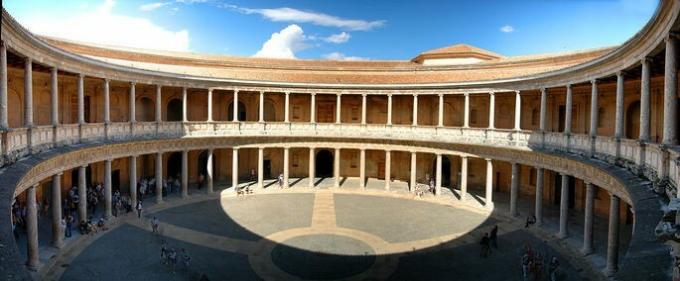
It was a period that spanned between the years 1530 and 1560. At this stage, interest in Gothic decoration diminished, finally considered excessive, which led to the application of the plastic values of the full Renaissance, such as decorative austerity and the valorization of classical culture Greco-Latin.
Herrerian period
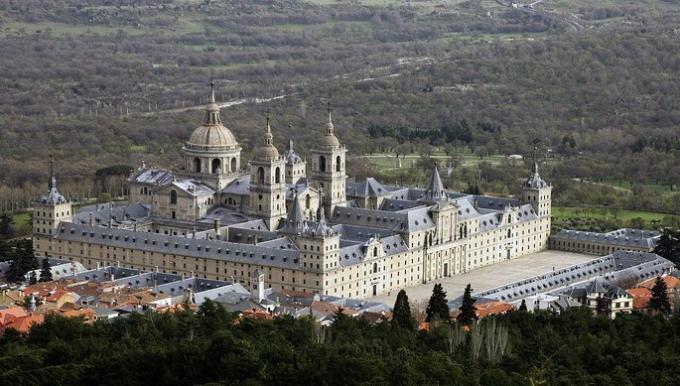
It received the name of the Herrerian period due to the influence of the architect Juan de Herrera, who developed a style characterized by geometric volumes -especially cubic-, the use of the straight line and sobriety in terms of decor. It had its heyday in the 16th and 17th centuries.
Renaissance artists and works
- Giotto di Bondone. Florence, 1267-1337. Painter. Outstanding works: Frescoes from the Scrovegni Chapel; the Santa Croce from Florence; Serie Life of san francisco in the upper church of San Francisco de Asís.
- Cenni di Pepo Cimabue. Florence; 1240 - Pisa; 1302. Painter. Crucifix from Arezzo; Crucifix from Santa Croce; Majesty of the Louvre.
- Filippo Brunelleschi. Italy, 1377-1446. Architect. Outstanding works: Cathedral of Santa María del Fiore, Florence.
- Leon Battista Alberti. Genoa, 1404 - Rome, 1472. Architect. Outstanding works: Basilica of Santa Maria Novella, Rucellai Palace.
- Fra Angelico. Florence, 1395-Rome, 1455. Painter. Outstanding works: The Annunciation; Altarpiece of San Marcos; The coronation of the Virgin.
- Sandro Botticelli. Florence, 1445-1510. Painter. Outstanding works: The birth of Venus; Spring.
- Paolo Uccello. Florence?, 1397-1475. Painter. Outstanding works: Battle of San Romano; St george and the dragon.
- Donato di Niccolò di Betto Bardi, known as Donatello. Florence, 1386-1466. Sculptor. Outstanding works: Equestrian statue of Gattamelata; David; Pulpit exterior of the cathedral of Prato.
- Lorenzo Ghiberti. Florence, 1378-1455). Sculptor, architect, goldsmith. Outstanding works: Gate of paradise of the Baptistery of Florence.
- Leonardo da Vinci. Vinci, 1452-Amboise, 1519. Painter, sculptor, architect, inventor, engineer. Outstanding works: The Mona Lisa or Mona Lisa; The Virgin of the Rocks; The Last Supper.
- Miguel Ángel Buonarrotti. Sculptor, painter and architect. Outstanding works: frescoes in the Sistine Chapel; sculpture Pity; sculpture David.
- Donato d'Angelo Bramante. Fermignano, c.1443-Rome, 1514. Architect. Outstanding works: St. Peter's Basilica; Temple of San Pietro in Montorio.
- Andrea Palladio (Padua, 1508-Maser, 1580). Architect. Outstanding works: Villa la Rotonda, Olympic Theater and Palladian Villas.
It may interest you: The 25 most representative paintings of the Renaissance
Writers
- Dante Alighieri. Florence, 1265 - Ravenna, 1321. Writer. Outstanding works: The Divine Comedy.
- Petrarch. Arezzo, 1304 - Padua, 1374. Writer. Outstanding works: Song book Y Secretum.
- Boccaccio. Certaldo, Italy, 1313-1375. Writer. Outstanding works: Decameron.
- Ludovico Ariosto. Reggio Emilia, 1474-Ferrara, 1533. Writer. Outstanding works: Orlando furious.
- Michael de Montaigne. France, 1533-1592. Writer. Outstanding works: essays.
- Erasmus of Rotterdam. Netherlands, 1466-1536: In Praise of Insanity; Colloquia; Adagia.
It may interest you Literary trends
Musicians
- Juan del Encina (1469-ca.1529). Musician. Outstanding works: Song book.
- Giovanni Pierluigi da Palestrina. Palestrina, 1526-1594. Musician. Outstanding works: Mass of Pope Marcelo.
- Orlando di Lasso. Belgium, 1532-1594. Musician. Outstanding works: Tears of Saint Peter.



